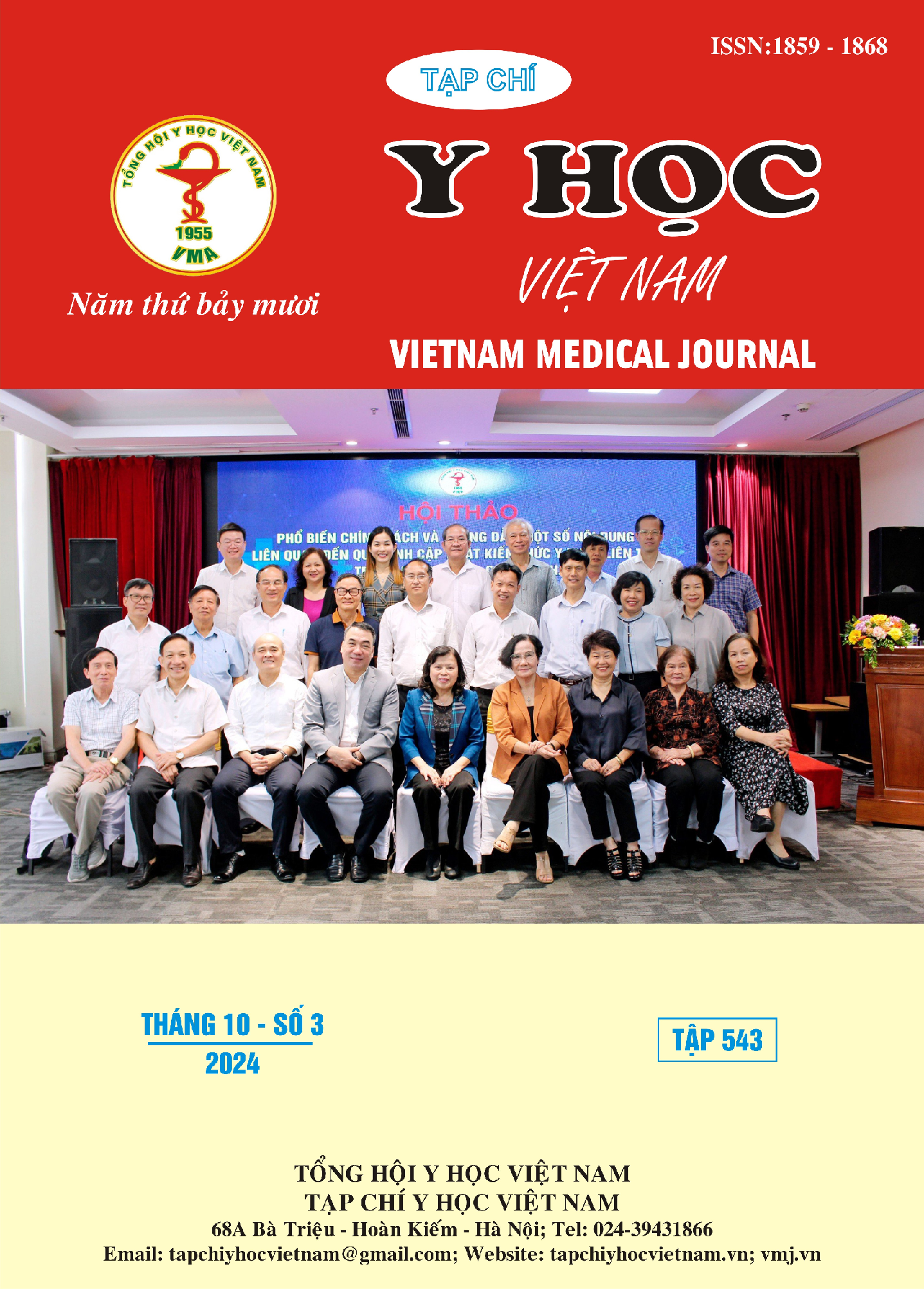HORIZONTAL DIMENSIONS OF THE MAXILLARY ALVEOLAR BONE IN THE VIETNAMESE POPULATION IN RELATION TO THE CREATION OF SPACE FOR ORTHODONTIC ALIGNMENT OF UNILATERALLY IMPACTED CANINES
Main Article Content
Abstract
Abstract: The horizontal dimensions of the maxillary alveolar bone are critical factors in orthodontic treatment, particularly concerning the alignment of unerupted canines. This study aims to investigate the specific measurements of the maxillary alveolar width in the Vietnamese population and how these dimensions relate to orthodontic practices, especially in the context of creating adequate space for the alignment of impacted canines. Objective: This research aims to investigate the horizontal dimensions of alveolar bone width in Vietnamese patients presenting with unilateral impacted canines. The significance of this index lies in its direct relationship to the orthodontic space creation process and the formulation of clinically appropriate treatment strategies for patients with constricted maxillary arches harboring impacted canines. Materials and Methods: The study employed a retrospective analytic cross-sectional design, utilizing 41 cone-beam computed tomography (CBCT) images of patients with unilateral impacted canines sourced from a multi-specialty hospital. The measurements of horizontal dimensions of alveolar bone in the canine and first premolar regions of the mandible were conducted on the horizontal plane of the CBCT images. These measurements were subsequently analyzed using the STATA 17.0 software, and any significant differences were established with a p-value threshold set at < 0.05. Results: The analysis revealed that the horizontal dimension of the alveolar bone width in the canine region, on the side affected by unilateral impacted canines, was significantly narrower compared to the non-impacted side (p<0.001), indicating a pronounced discrepancy. Conclusion: Findings indicate that the horizontal dimension of the alveolar bone width in the maxillary region associated with unilateral impacted canines is considerably reduced in comparison to the unaffected side. In contrast, the horizontal dimension in the first premolar area exhibited only a negligible decrease, underscoring the localized impact of canine impaction on alveolar bone structure. This study contributes valuable insights that could enhance orthodontic treatment planning and management for affected individuals.
Article Details
Keywords
maxillary alveolar bone, horizontal dimensions, Vietnamese population, orthodontics, impacted canines, treatment planning.
References
2. Becker A, Chaushu S. Etiology of maxillary canine impaction: a review. American Journal of Orthodontics and Dentofacial Orthopedics. 2015;148(4):557-567.
3. Khan H, Ashraf A, Anwar A, Najam E, Ahmad F, Khan T. Prevalence and patterns of impacted maxillary canines: a cbct based retrospective study. Pakistan Oral & Dental Journal. 2018; 38(2):211-214. doi:http://www.podj.com.pk/ index.php/podj/article/view/205
4. Yassaei, S., Safi, Y., Valian, F., & Mohammadi, A. (2022). Evaluation of maxillary arch width and palatal volume and depth in patients with maxillary impacted canine by CBCT. Heliyon, 8(10).
5. Alfaleh W, Al Thobiani S. Evaluation of impacted maxillary canine position using panoramic radiography and cone beam computed tomography. The Saudi dental journal. Nov 2021;33(7):738-744. doi:10.1016/j.sdentj.2020.03.014
6. Vi Thị Hồng, Trần Cao Bính. Đặc điểm hình thái răng nanh vĩnh viễn hàm trên ngầm qua phim cắt lớp vi tính chùm tia hình nón. Tạp chí Y học Việt Nam. 2021;506(1):229-233.
7. Alhammadi MS, Asiri HA, Almashraqi AA. Incidence, severity and orthodontic treatment difficulty index of impacted canines in Saudi population. Journal of clinical and experimental dentistry. 2018;10(4):e327. doi:10.4317/jced.54385
8. Alyami B, Braimah R, Alharieth S. Prevalence and pattern of impacted canines in Najran, South Western Saudi Arabian population. The Saudi dental journal. 2020;32(6):300-305.
9. Saiar, M., Rebellato, J., & Sheats, R. D. (2006). Palatal displacement of canines and maxillary skeletal width. American Journal of Orthodontics and Dentofacial Orthopedics, 129(4), 511-519.
10. Verma P, Dinesh SPS. Maxillary transverse dimensions in subjects with and without impacted canines in South Indian population: a comparative cone-beam computed tomography study. Orthodontic Waves. 2021;80(1):9-16.


